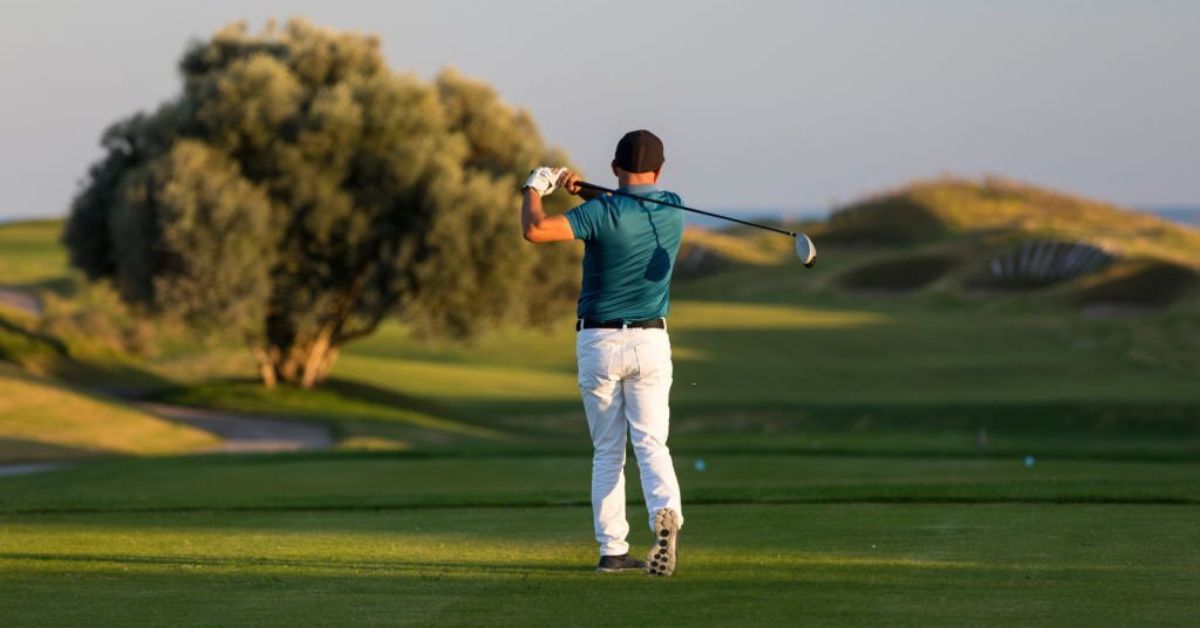“Why am I hooking my driver?” you despair — as yet another ball dives left.
Many golfers struggle with hooking driver but not irons. The differences in setup and swing mechanics between the two clubs often lead to wayward drives.
With its longer shaft and greater clubhead speed, the driver is more difficult to control compared to irons. A strong grip, overly quick transition, inside-out swing path, or lack of body rotation are frequent causes of driver hooks.
Thankfully, there are fixes like weakening your grip, slowing tempo, taking the club outside on the backswing, and maximizing rotation.
By becoming aware of the unique challenges presented by the driver swing, you can begin implementing changes to stop those frustrating leftward hooks.
Read on to learn more about the reasons behind hooking driver but not irons, and actionable tips to hit your driver straighter. Start splitting fairways!
Hooking Driver But Not Irons
Many golfers find themselves hooking driver but not irons as they are very different clubs. Drivers have a longer shaft and higher clubhead speed, making it harder to control the clubface. Hooks are caused by cutting across the ball, so golfers should aim to keep the face square at impact.
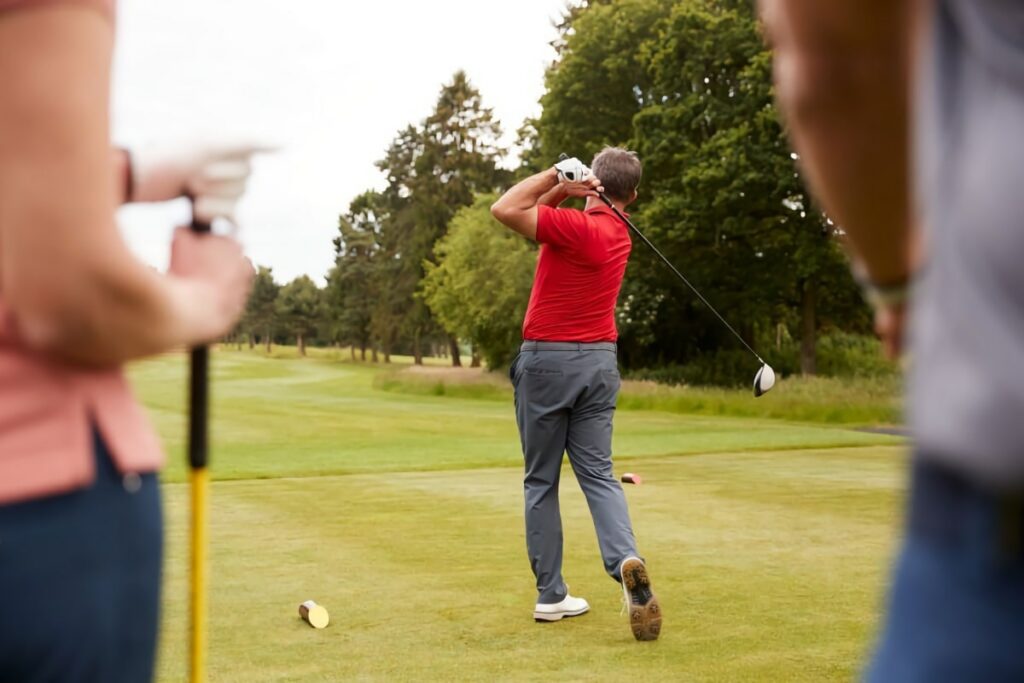
Driver Swing vs Iron Swing
Drivers and irons are vastly different golf clubs.
To understand why you might be hooking the driver but not the irons, it’s important to be aware of the differences between the driver swing and the iron swing.
Driver Swing
For the driver swing, there are three main setup points to think about:
- Feet position: Wider than shoulder-width apart
- Ball position: Forward and inside the left heel
- Upper body: Tilted to the right with dropped right shoulder
Firstly, you must create a stable base when hitting the driver. To achieve this, stand with your feet wider than shoulder-width apart.
Secondly, the ball position should be inside the left heel. By doing this, you are encouraging an upwards angle of attack to maximize speed and distance.
Finally, tilt the upper body to the right and drop the right shoulder down. Once again, this helps to ensure you hit up on the ball for an optimum launch angle.
PRO TIP: With driver, your aim is to hit up on the golf ball.
Iron Swing
By contrast, the iron swing is completely different:
- Feet position: Shoulder-width apart
- Ball position: Just in front of center
- Upper body: Stays over the golf ball
With irons, the stance should be narrower than the driver setup. Stand with your feet shoulder-width apart.
Next, the ball position should be just in front of the central position between your feet. By keeping the ball further back, your goal is to hit down on the ball.
Finally, keep the upper body over the ball, rather than moving to the right as in the driver setup. As you make contact, the chest should be slightly left of the golf ball.
PRO TIP: With irons, your aim is to hit down on the golf ball.
Check out this video from Rick Shiels, where he outlines the main differences:
How to Stop Hooking Driver
Now that we know the differences between the driver swing and the iron swing, let’s explore the reasons why golfers hook their drives.
There are four common reasons for a hook:
- A grip that’s too strong
- Too quick in transition
- Swinging too far from in-to-out
- Lack of body rotation
For each reason, I’ve provided a solution to help you fix it. Read on!
Reason: Grip Is Too Strong
Many flaws in the driver swing stem from the grip of the driver.
If your grip is too strong, this can cause you to hook the ball.
A strong grip can cause the hands to cross over at impact. This closes the clubface and adds lots of sidespin, causing the ball to dive left in the air.
Solution: Weaken the Grip
To solve this, weaken the grip by rotating your hands left on the grip. This encourages the clubface to be more square at impact, reducing the risk of hooks.
PRO TIP: If you can see more than two knuckles on your left hand, your grip might be too strong.
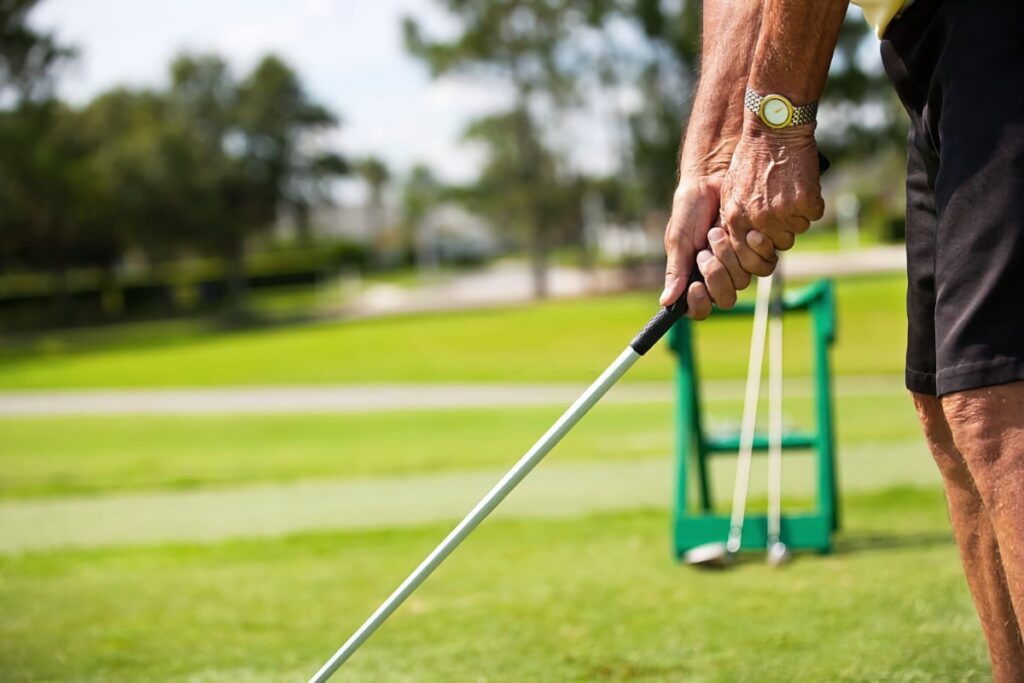
Reason: Too Quick In Transition
A common mistake made by many golfers is swinging too quickly and too hard.
When the swing tempo is too quick, this can result in a hook.
Being too quick in the transition can cause you to lose any sense of rhythm. This makes it difficult to keep the clubface square at impact.
Solution: Slow Down Your Tempo
Many golfers make the mistake of swinging at 100% – try to swing at around 85% to remove tension from your swing.
If you’re struggling with tempo, consider using a shorter shaft in your driver to improve accuracy and confidence over the swing.
PRO TIP: During your swing, count “1 and 2” to help slow the tempo, improving your control of the clubface.
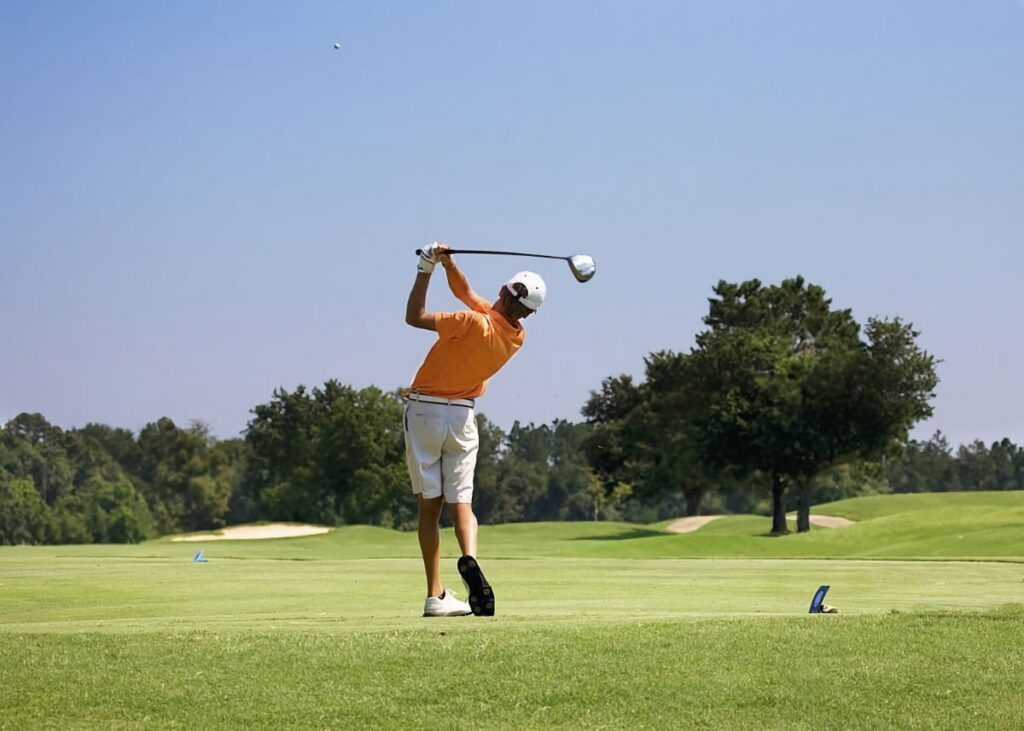
Reason: Swinging Too Far In to Out
Bringing the driver too far inside on the backswing can often result in an inside-to-outside swing path.
This causes the clubface to travel from in to out at impact, with a closed face.
Subsequently, this adds lots of sidespin to the ball causing it to hook left in the air.
Solution: Go Outside on the Backswing
Instead of bringing the club inside on the backswing, focus on taking the club outside on the way back.
This encourages the clubface to strike the ball square on, rather than cutting across it.
PRO TIP: For quicker progress, try to exaggerate the movement first to get used to the adjustment.

Reason: Lack of Body Rotation
Many amateur golfers fail to rotate their body enough during the golf swing.
This can cause them to be overly reliant on using the arms. Flipping the arms can cause the clubface to cut across the ball, adding sidespin and resulting in a hook.
Solution: Aim to Rotate 90 Degrees
Focus on turning the upper body in the backswing, as close to 90 degrees as possible.
This amount of rotation helps the club to move freely through the swing, without relying on the arms to generate power. As a result, the clubface remains more square at impact.
PRO TIP: Keep your wrists strong at impact – don’t let them roll over.
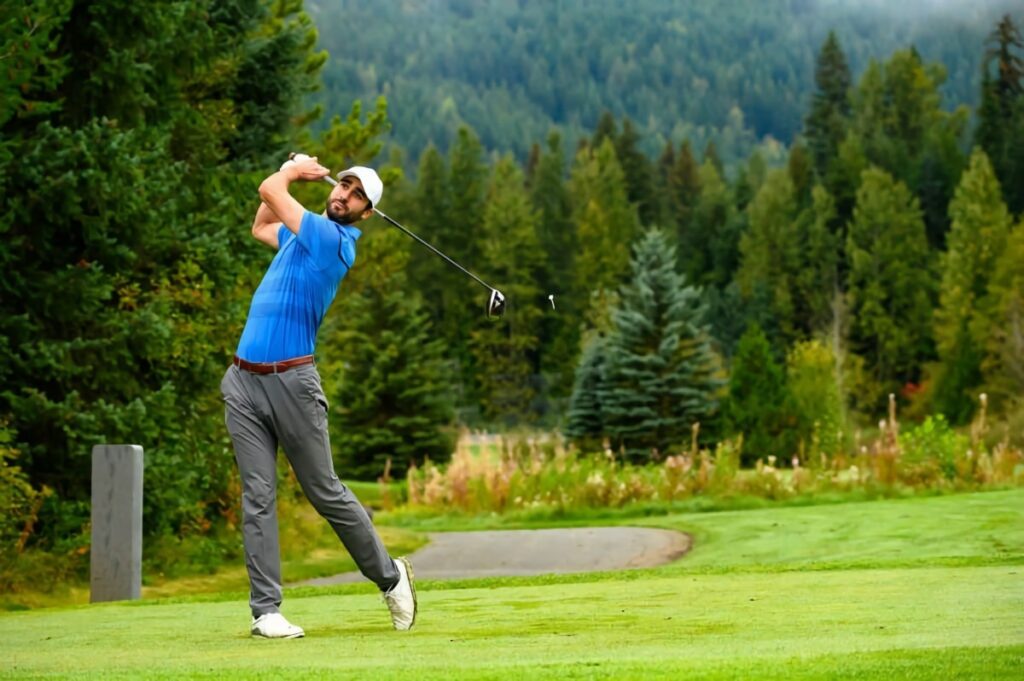
Final Thoughts
In conclusion, many amateur golfers struggle with hooking their driver but not irons because the driver swing differs greatly from the iron swing.
With the driver, your setup should encourage you to hit up on the ball. By contrast, the setup for irons should prompt you to hit down on the ball.
Here are the common reasons for hooking your driver, and the solutions:
- A grip that’s too strong – weaken the grip
- Too quick in transition – slow down the tempo
- Swinging too far from in to out – bring the club outside
- Lack of body rotation – aim to rotate 90 degrees
Work through each of these tips one by one at the driving range, and you’ll be hitting more fairways in no time!

